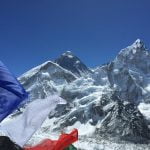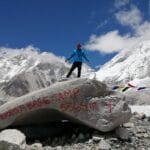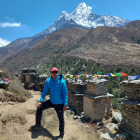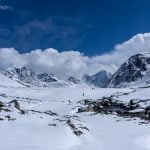Planning a journey for an Everest Base Camp Trek in June? Prepare for monsoon season! When it’s raining, you’ll see lush green scenery and less people. The rain brings both hardships and unusual beauty.
Mystical mountains and blossoming flowers greet. You’ll need appropriate weather gear and an optimistic attitude. This walk tests your spirit, but the experience is unforgettable. Are you prepared for a rainy mountain journey?
How challenging is the Everest Base Camp Trek in June?
The Everest base camp hike is at high altitude. To reach Everest base camp, you must ascend 5364 meters above sea level. You must walk at your own pace; this is not a race.
Our professional guide recommends walking at your own pace to avoid AMS. To adjust to high altitude environments, acclimatization is required on a regular basis. If you are uncomfortable, please consult our specialist and return promptly.
Because June is the rainy season, you should be prepared for slick trails. To avoid injury, exercise caution when walking on the Everest routes.
There are also certain areas where there is a risk of mudslides or landslides. You must be focused and careful while traveling to these locations.
Furthermore, you must be extremely cautious about your health while trekking to Everest base camp. During this era, waterborne illnesses become active. That’s why you should consume water after it’s been properly treated.
During the monsoon season, mosquitos and leeches are rampant in the Everest Trails forest area below Namche Bazar. While walking through Sagarmatha National Park’s forest, you may be bitten by a leech. So you should wear long sleeves and bring an insect repellent with you.
Key Things to Consider for an Everest Base Camp Trek in June
Trek Duration
Because of the amount of rainfall in June, your treks may not go as smoothly as they do in other months when the monsoon is not present. There may be slick tracks along the way that slow you down.
Furthermore, your flights to Lukla from Kathmandu as you prepare to begin your climb may be cancelled owing to climatic conditions that prevent the flights from operating. As a result, you should allow for additional days to adjust to the weather.
Weather and Climate
Weather challenges are the most significant part of the Everest Base Camp Trek in June. However, it is more dangerous than the monsoon or winter season. June is the first month following Spring in Nepal.
So you should get some Spring feelings with scattered clouds (not too many) and a mild climate. However, when nighttime temperatures drop below 0 degrees Celsius, you will need to plan ahead of time.
And because the weather in the Himalayas is unpredictable, you never know when it may rain or snow. However, we urge that you look at the weather prediction to assist you prepare.
Messy Landscapes and Trails
Everest Base Camp is located in Nepal’s Himalayan area, which is hilly and characterized by sloppy and perilous terrain. This means that getting to this place is difficult and physically demanding. Climbing over these landscapes will need technical expertise.
The trails are steep and slippery, so we urge trekkers wear sturdy hiking boots with a good grip. In addition, during the Everest Base Camp Trek in June, you will have to hike for more than 6 hours per day, which might be physically demanding.
Walking such a long distance in perilous terrain is extremely difficult, therefore train and prepare thoroughly before beginning on this journey.
Crowds
The Everest Base Camp Trek in June occurs during the off-season. During this season, there are few hikers and climbers, so you can enjoy as much privacy as you like.
Many trekkers and visitors complete their journeys around this time, making the pathways less congested and ideal for peace seekers. If you enjoy strolling in peace, June is the optimum month to trek to Everest Base Camp.
What You Need to Bring
| Category | Items |
| Clothing | – Waterproof jacket and pants – Quick-dry shirts and pants – Warm fleece or sweater – Thermal underwear – Hiking boots (waterproof) – Comfortable trekking socks – Rain poncho – Warm hat and gloves |
| Gear | – Backpack with rain cover – Sleeping bag (rated for cold) – Trekking poles – Headlamp with extra batteries – Water bottles or hydration system |
| Health & Hygiene | – First aid kit – Sunscreen and lip balm – Insect repellent – Personal medications – Toiletries – Quick-dry towel |
| Documents | – Passport and visa – Trekking permit – Travel insurance documents – Cash and credit cards |
| Miscellaneous | – Camera with extra batteries – Power bank – Snacks and energy bars – Plastic bags (for waterproofing) – Sunglasses – Map and compass |



